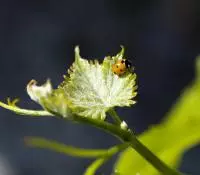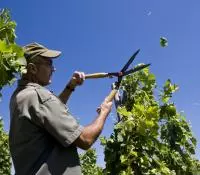- Respect the terroirs and preserve resources
Searching for resistant grape varieties
The Côtes du Rhône appellation has 23 authorised grape varieties (also known as varietals). Their cultivation varies according to the climate and the soil, which is referred to as the “terroir effect".
Over the centuries, the AOC's winemakers have selected these grape varieties for their taste qualities and the finesse they add to the blends, resulting in well balanced, harmonious wines. The Côtes du Rhône region's grape varieties are governed by a set of specifications. The main grape varieties used for the production of AOC red wines are Grenache, Syrah and Mourvèdre. They represent at least 70% of the grape varieties planted. For the whites, the varieties are Bourboulenc, Clairette, Grenache Blanc, Marsanne, Roussane and Viognier, representing at least 80% of the white varieties planted.

Contents
So I hear this is set in stone?
Yes, and no actually. In order to combat climate change and disease, the AOC has authorised, under certain conditions, the planting of new varietals resulting from crossings. These new varietals are Caladoc, Marselan and Couston.
The Syndicat des Vignerons des Côtes du Rhône continues to participate in a programme to select those grape varieties that are resistant to certain diseases in order to use less treatments in the vineyards, while preserving the typical character of the AOC’s wines.
In 2021, 6 promising grape varieties, resulting from natural crossings between the Syrah and Grenache, were planted at the Lycée Viticole in Orange. Selected by the Syndicat des Côtes du Rhône, they show a good potential with regard to climate change and in particular a high tolerance to drought.


